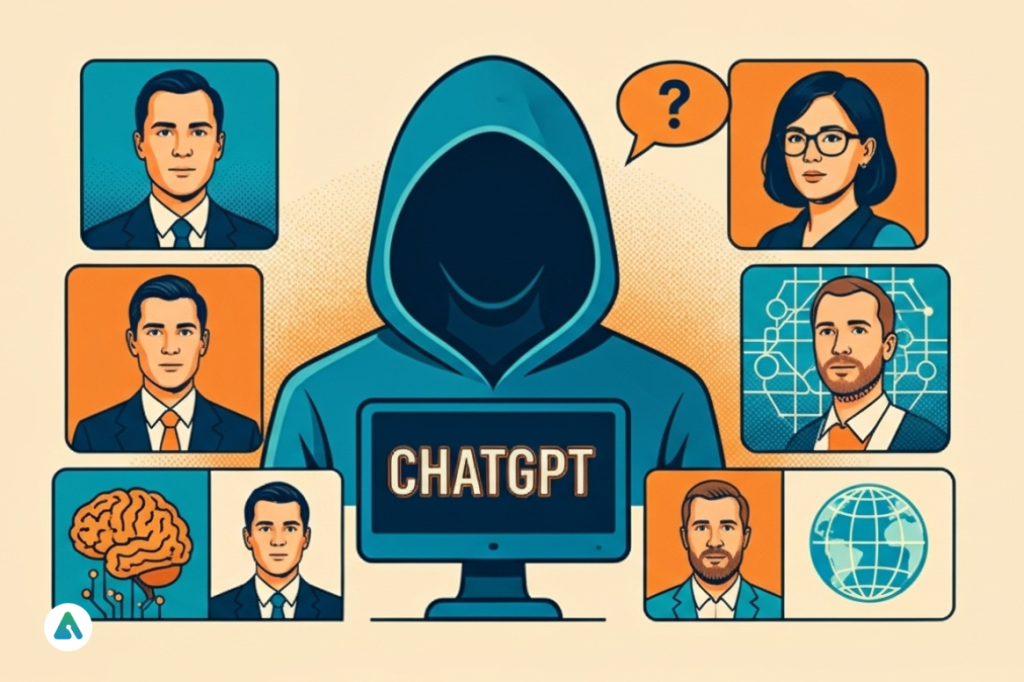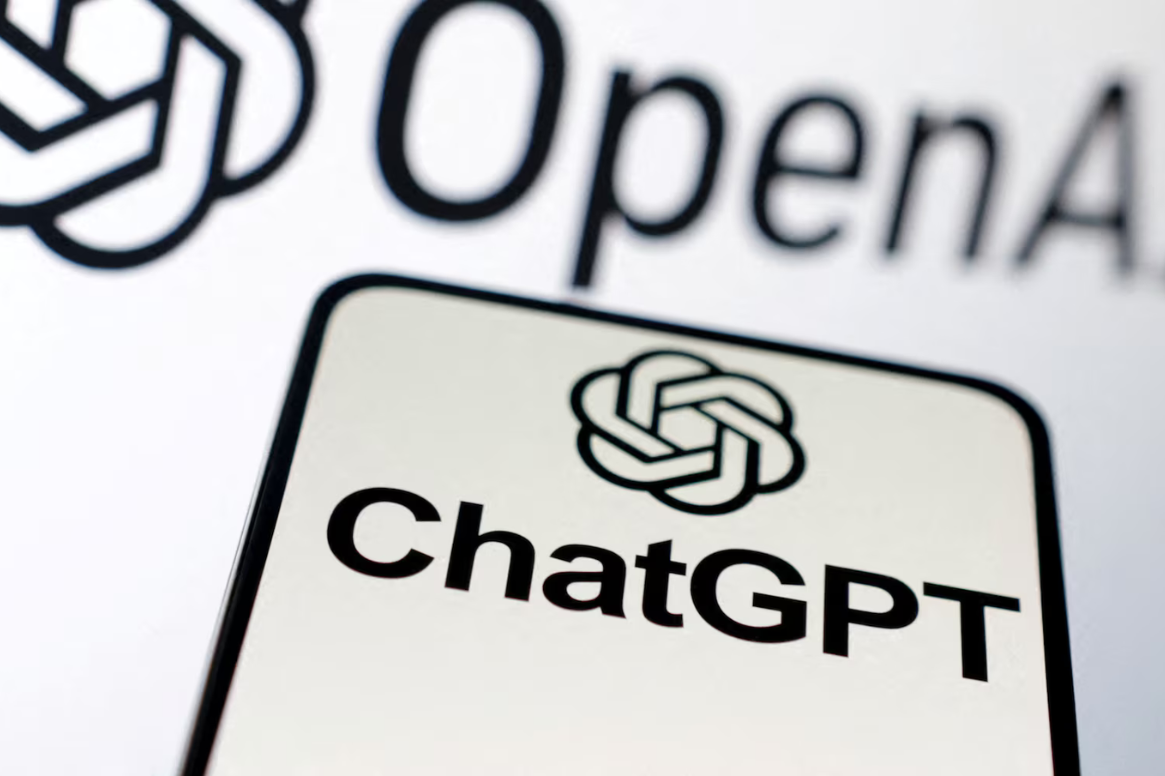Ever asked ChatGPT a random question at 2 AM and felt like it just read your mind? You’re not alone. ChatGPT isn’t just a chatbot—it’s basically the AI equivalent of that super-smart friend who always has an answer. But like any good story, there’s more behind the curtain than meets the eye.
This article dives into who created ChatGPT, how it works, why it blew up globally, and what’s next in the AI game.
What Is ChatGPT?
Think of ChatGPT as your ultra-smart, slightly nerdy assistant that never sleeps. Unlike Google, which just points you to pages, ChatGPT actually crafts responses on the spot, predicting the most likely words to make sense of your question.
It’s powered by large language models (LLMs)—basically, AI brains trained on billions of words from books, articles, and websites. Add in human feedback, and you get a chatbot that can remember context, adjust tone, crack jokes, or help you draft a killer essay.
Whether you’re coding, writing, making memes, or just procrastinating, ChatGPT is the AI buddy you didn’t know you needed.
Who Created ChatGPT?
OpenAI was founded in December 2015 by visionaries like Sam Altman, Elon Musk, Greg Brockman, Ilya Sutskever, Wojciech Zaremba, and John Schulman.
Here’s the fun twist: Elon Musk was on board early, pushing to make AI safe and widely accessible. But in 2018, he left the board. Why? He didn’t want OpenAI’s AI projects to conflict with Tesla and SpaceX’s AI ambitions—basically, he didn’t want two “Terminator moments” under his belt.
The heavy lifting to actually build ChatGPT came from:
- Mira Murati – Former CTO, the mastermind guiding product design, development, and safe rollout.
- Engineering Wizards – People who make computers think like humans (sort of).
- Research Teams – Curated datasets, supervised human feedback, and polished the AI’s smarts.
- Design Teams – Ensured ChatGPT doesn’t look like something out of a 90s sci-fi UI.
It’s truly a team effort—like an Avengers of AI, but with fewer capes.
How ChatGPT Works
Here’s the magic in bite-sized form:
- Reads your question – understands context, tone, and maybe your existential crisis.
- Predicts a response – based on patterns it learned from billions of words.
- Spits out an answer – dynamically, in real time, hopefully making you say “Whoa, it actually gets me.”
And yes, humans train it too. Thousands of reviewers refine the outputs to make sure it doesn’t go rogue. GPT-4 and GPT-5 even process images and audio—so it’s not just text anymore.
The Evolution of ChatGPT
The AI saga is real. Here’s how it went down:
- GPT-1 & GPT-2: Early tests showing AI could string sentences together without sounding like a robot (well… mostly).
- GPT-3 (2020): 175 billion parameters—suddenly it could write essays, poems, and code like a caffeinated genius.
- ChatGPT Launch (Nov 30, 2022): Expected a few thousand users; hit 1 million in five days and 100 million by Jan 2023. Fastest-growing consumer app ever. No joke.
- GPT-4 (March 2023): Added reasoning, real-time browsing, and image input.
- GPT-5 (Aug 7, 2025): Faster, smarter, better at keeping context and multi-tasking.
- GPT-6 (Coming Soon): Rumor has it it’ll be basically like having a digital twin who can brainstorm, plan, and maybe make your coffee.
ChatGPT User Base & Global Reach
This thing is everywhere. ChatGPT Stats that make your jaw drop:
- Daily users: 100M+
- Monthly visits: 4.61B
- Daily prompts: 2.5B
- YouTube traffic: 62% of visits come via social buzz
- Under 25 users: 45%
- U.S. users: 15%
Basically, if ChatGPT were a country, it’d be the third most populous on the planet.
ChatGPT vs. Competitors
Sure, there’s Google Gemini, Claude, Grok, Meta AI, and Perplexity AI—but ChatGPT is the OG for productivity and creativity.
| Platform | Developer | Strengths | Weaknesses | User Base | Fun Fact |
| ChatGPT | OpenAI | Human-like chat, multimodal input, plugins | Paid tiers, occasional hallucinations | 100M+ daily | Basically the default AI buddy |
| Google Gemini | Live search, accurate info | Less creative, fewer apps | ~20M+ | Good for facts, meh for jokes | |
| Claude | Anthropic | Safety-focused, reasoning | Slower, smaller user base | ~10M+ | Doesn’t roast you (yet) |
| Grok | X/Twitter | Social integration | Only works in X ecosystem | ~5M+ | Socially awkward |
| Meta AI | Meta Platforms | Social AI, image recognition | Less conversational polish | ~15M+ | Good for FB fans |
| Perplexity AI | Perplexity Labs | Quick facts, search answers | Small user base, less context | ~8M+ | Fast, not chatty |
Even with heavy competition, ChatGPT still dominates mindshare and adoption, basically like the Apple of AI chat.
Why ChatGPT Blew Up
- It actually works: Gets context, remembers chats, gives legit answers.
- Free access: Everyone could try it without a credit card.
- Perfect timing: Launched when digital curiosity was at an all-time high.
- Versatility: Essays, coding, art, memes—you name it.
- Community Plugins: Users constantly add new tricks.
Challenges & Controversies
AI isn’t perfect. Here’s the reality check:
- Bias & Errors: Can hallucinate facts or echo stereotypes.
- Legal & Ethical Issues: Copyright, moderation, privacy—still tricky.
- Energy Use: Big models = big electricity bills for the planet.
- Job Impact: Coders, writers, creatives—watch your chairs.
OpenAI tries to mitigate all this with filters, human reviewers, and policies—but responsible use is on us too.
The Future of ChatGPT
GPT-6 is coming, promising:
- Smarter reasoning and problem-solving
- Seamless integration into work, school, and creative projects
- Personalized help that actually feels personal
The AI revolution isn’t slowing down—and ChatGPT is leading the charge.
FAQs
Q1. When was ChatGPT released?
ChatGPT was officially launched on November 30, 2022 by OpenAI and quickly became one of the fastest-growing AI chatbots in history.
Q2. Who created ChatGPT?
ChatGPT was developed by OpenAI, founded by Sam Altman, Greg Brockman, Ilya Sutskever, Wojciech Zaremba, and John Schulman. Mira Murati, OpenAI’s former CTO, led its technical development. Elon Musk helped co-found OpenAI but left in 2018 to avoid conflicts with Tesla and SpaceX.
Q3. How does ChatGPT work?
ChatGPT is powered by GPT (Generative Pre-trained Transformer) technology. It analyzes your input, predicts responses, and generates human-like answers. GPT-4 and GPT-5 also handle text, images, and audio for more interactive responses.
Q4. How many people use ChatGPT?
Over 100 million people use ChatGPT daily, with 4.61 billion monthly visits worldwide, making it one of the most widely adopted AI tools today.
Q5. Why is ChatGPT so popular?
Its popularity comes from human-like conversations, versatility, accessibility, viral adoption, and an active user community. From writing essays to coding and creative brainstorming, ChatGPT has become a go-to AI assistant for millions.
Final Thoughts
ChatGPT isn’t just AI—it’s the ultimate digital sidekick. When you wonder who invented ChatGPT, the story goes from Elon Musk’s early vision to Mira Murati’s leadership and the countless engineers working behind the scenes. It’s a tale of collaboration, innovation, and a little bit of chaos.
Even with competitors in the mix, ChatGPT remains the go-to AI for millions, shaping how we create, learn, and just get things done. And honestly? The best part? The story of who created ChatGPT is far from over.
Visit: AIInsightsNews




